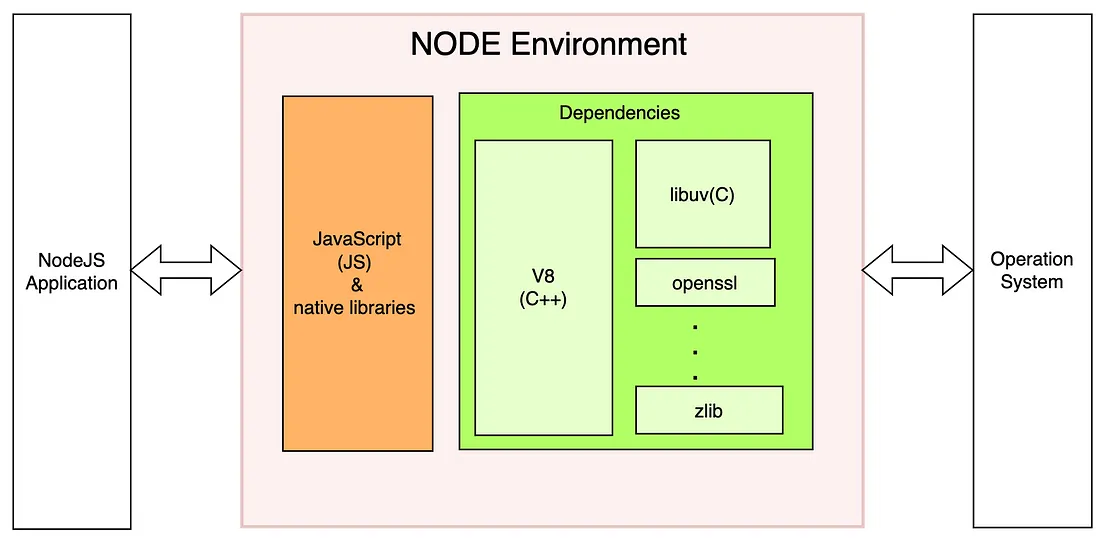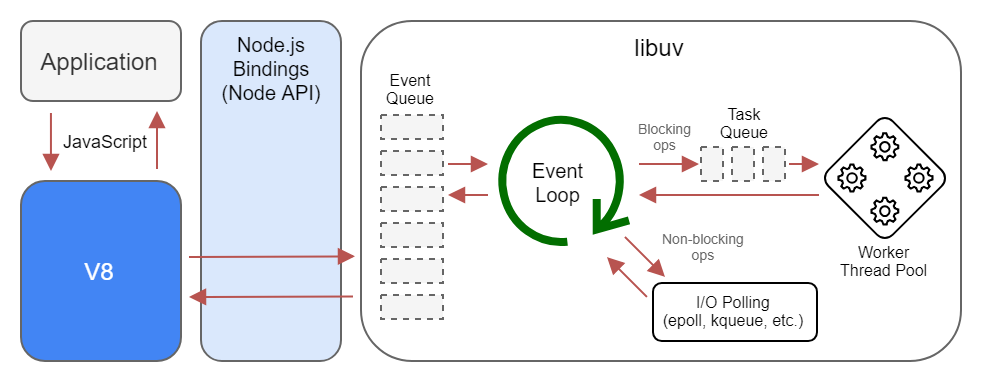Internal Working of Node JS
 Riyaz Nabiyulla
Riyaz Nabiyulla
Node. Js is one of the best platforms for developing big and efficient network applications. It employs server-side JavaScript; that is why developers are fond of it. But have you ever thought about what it is like behind the scenes when you run a Node JS application? Let me explain to you about the internal structure of Node. js in a simple manner and in simple language and at the same time introduce key terminologies.
1. The V8 Engine
The V8 Engine Thus, the essence of Node. js is the V8 engine, developed by the Google company. V8 is a fast JavaScript engine that converts JavaScript into the native code of the computer. As a result, your JavaScript code performs well because it is compiled into commands that the processor in your computer can perform.
2. Event Loop
Event Loop Node. js works on a single-threaded event loop model. This might sound complex, but here’s a simpler explanation: It is similar to the loop in which the event is put and carries out multiple tasks without waiting for the main thread.
Blocking vs. Non-blocking: In conventional coding, the functions suspend the operation of other programs if it’s waiting for something to finish (such as reading a file). In Node. js, non-blocking I/O operations imply that if one task is being executed, another is waiting, and Node.js for other tasks can do it. This is done by callback and promises.

3. Asynchronous Operations
Node. js is synchronization inoperative intended to be used for asynchronous operations. This also means that things such as reading files or querying a database do not suspend the execution of your program. Instead, Node. js persists to run and calls a callback function when the operation is done.
Callbacks: Subroutines that are coded as arguments to another function; these subroutines operate after the principal function has done its operation. Promises: It is a newer form of writing asynchronous code and can be considered to be cleaner in syntax and also provide better error handling as compared to callbacks.
4. Libuv Library
Libuv Library Node. js uses a library called libuv to aid in performing asynchronous operations on I/O. Libuv is used for event loops, asynchronous file system operations, and fundamental networking operations. What is more, it isolates the client from the details of operating system peculiarities.
5. Single Threaded, Multi-threaded Internally
While Node. js runs on a single main thread (the event loop), internally it uses a pool of threads for examples for file I/O and DNS. This pool is handled by libuv, and Node is enabled to have a pool of these files ready and waiting for use. To enhance the application’s QUAL, js to carry out tasks that do not require the complete interrupt of the main thread.
6. The Callback Queue
When asynchronous operations are done their corresponding callbacks are added to the callback queue. It is a queue containing the callbacks to be processed when the main thread is available, and the event loop frequently looks at this queue. This leaves a clear direction on how tasks should be executed and in what sequence.
7. Event Emitters
Node. The objects of js applications normally employ Event Emitters in handling events. An Event Emitter is an entity that fires events that are identified by a name, and which clients can subscribe to. For instance, when reading a file, an event can occur to indicate that data is ready to be utilized, for example, in computation.
Conclusion
Continual data can be effective if there are streams for it. Unlike with the full data, which may be huge and take much space in a typical computer memory, streams work on data in batches. It can be employed more in the context of treating a vast amount of data or continuously arriving data.
Some critical information about the workings of Node. js users get a head start in discarding unconstructive vibes that hinder efficient and scalable applications. Thus, using the V8 engine, event loop, asynchronous operations, and other internal processes, Node. js is able to. js is fully capable of running many operations in parallel and will not stall when working through a list. Regardless of whether you are designing and developing web servers, real-time applications, or data-intensive services, Node. javascript offers you a strong base to fulfill your requirements.
Subscribe to my newsletter
Read articles from Riyaz Nabiyulla directly inside your inbox. Subscribe to the newsletter, and don't miss out.
Written by

Riyaz Nabiyulla
Riyaz Nabiyulla
Tech enthusiast and full-time worker 🚀 Learning DSA in Java to unlock new coding adventures! ☕ Passionate about solving puzzles and embracing continuous learning. Let's connect and build a brighter tech future together!